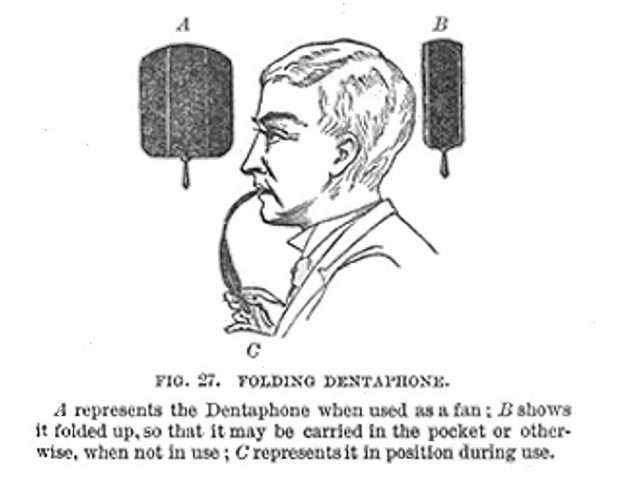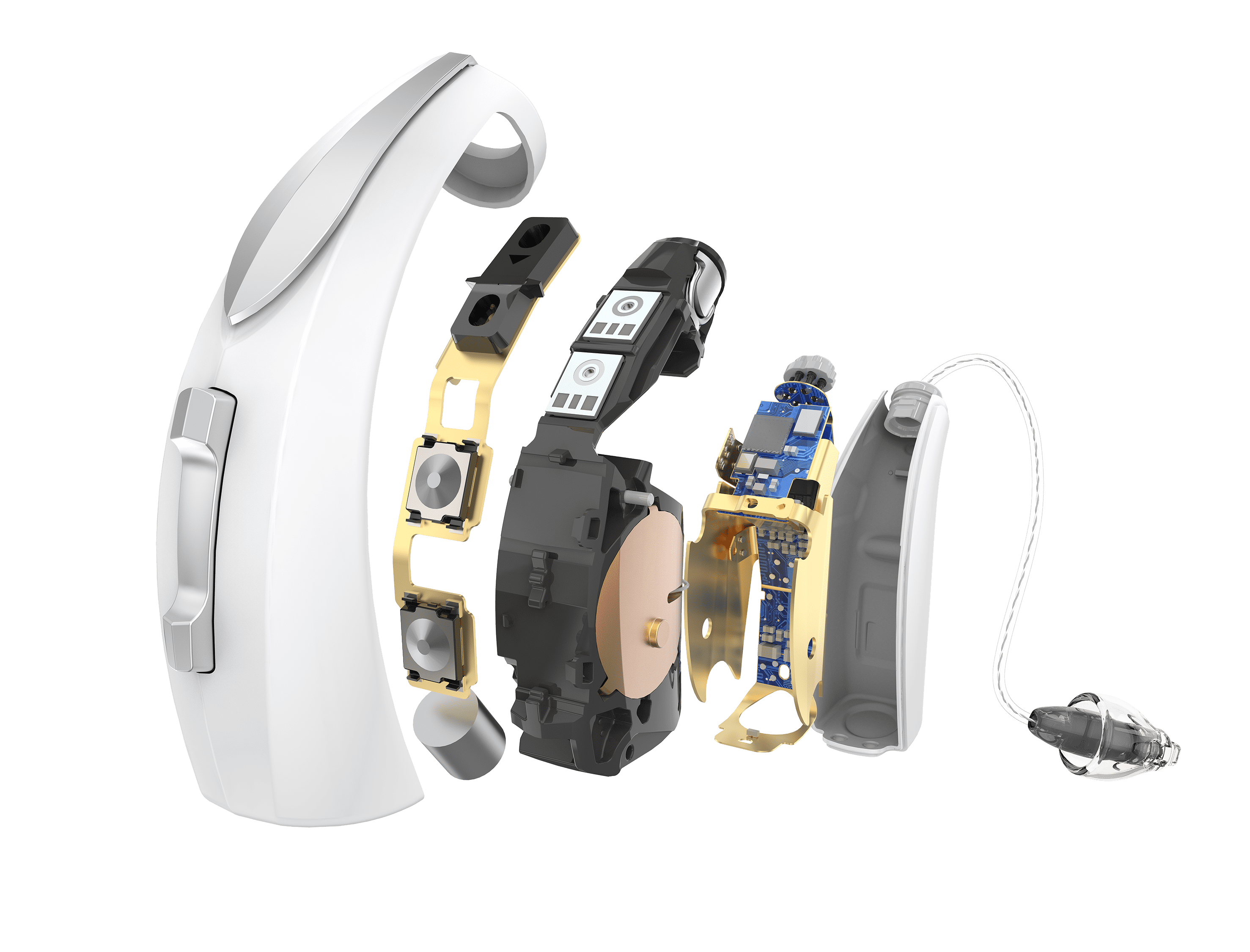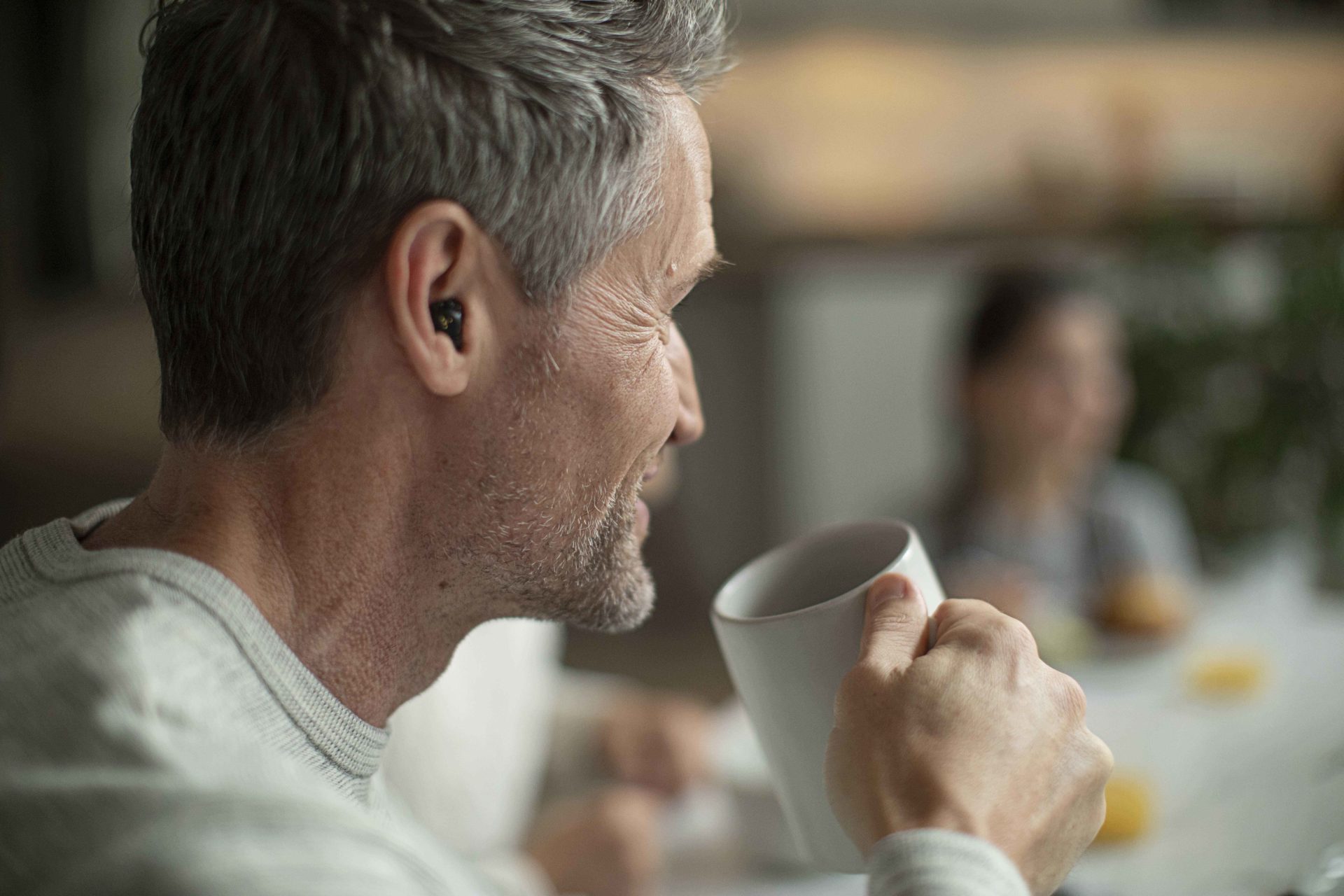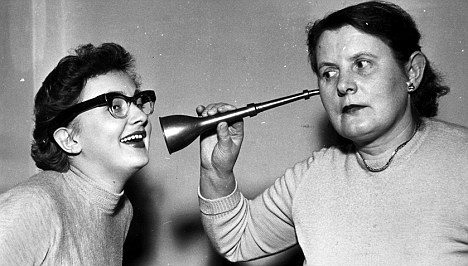Hearing aid technology has been continually developing through the years and continues to do so as technology progresses. But when did the first hearing aid appear? And how much have they developed since the earliest versions were available?
Our latest blog post explores the history of hearing aids, taking you from the ear trumpet all the way through to the cutting edge technology of today. We also impart some knowledge to help you understand whether you may need hearing aids yourself.
The first hearing aid
The ear trumpet
One of the easiest methods to increase hearing levels can be by cupping your hand over your ear. By doing this you can increase your hearing levels up to 12 decibels. Decibels (DB) is a measurement relative to the loudness of sounds. It is thought that before hearing aids were invented this was the first method used to increase levels of hearing, and it is still used to this day
By keeping this same technique and implementing it into a device, the ear trumpet was created in the 17th century. The history of hearing aids technology, therefore, starts at around this period. The idea behind the ear trumpet was much like hand cupping in that more sound is to be captured, in addition to the sound having a direction to travel to as well
Although the ear trumpet was fairly portable and worked to an extent, those with poor hearing would still struggle to hear in crowded environments. It was recommended that the speaker talk directly into the ear trumpet for the best results yet, this made it difficult when multiple people would want to speak at the same time.
Modernised versions of the ear trumpet were soon invented, following the same method of the sounds being caught through a large cylinder to then be transmitted through a tube into the ear. These were known as conversation tubes.
Conversation tubes
Conversation tubes were also invented within the 17th century with some collected from around 1796. Much like ear trumpets, conversation tubes would work by someone speaking directly into a tube which would connect to the user’s ear
The main difference between conversation tubes and ear trumpets is that a funnel would connect a mouthpiece from the hearing tube.
Rather than the instrument being a static trumpet, this allowed for more flexibility when speaking to people in addition to clearer sound. Yet it was still not useful in crowded areas as only one person can speak at a time. How did the telephone aid the invention of the hearing aid?
Carbon hearing aids
After the telephone was invented in 1876 technology became available to alter the frequencies, loudness and distortion of sounds. In 1878 the carbon microphone was created for the purpose of the telephone. This then led to the invention of carbon hearing aids
What are carbon hearing aids?
A carbon hearing aid consists of a carbon microphone which would be worn as a lapel, connected to an earpiece often worn as headphones. Since their initial invention, various styles and brands of carbon hearing aids have been developed.
This technology was then able to produce the first hearing aid in 1898 by Miller Reese Hutchinson. Hutchinson had a deaf and mute friend, he wanted to invent something that would benefit his friend, therefore, he came up with the hearing aid. He was able to use an electric current to amplify weak signals, this invention then got improved and altered until the first commercially manufactured hearing aids were available on the market in 1913.
Although these hearing aids worked to an extent they were very bulky and not very portable, making them difficult to use when in outdoor areas. However, they were very popular during the 20th century and were the first electrical hearing aids. It was these types of hearing aids which allowed us to begin to advance into the hearing aids we have today. You can find out more about carbon hearing aids on the hearing aids museum website.
How were teeth used as a hearing aid?
As methods of hearing aids were developing some people found the ear trumpet would not work very well for them and continued to struggle with hearing. One person who found this an issue was Richard Rhodes, however, in 1879 Rhodes was able to get a patent on a new design for a hearing aid, the audiphone.
Rhodes found that when using an ear trumpet with the traditional method he could not hear very well, yet, when placed in his mouth he was able to hear the ticking of his watch. He was able to find that sound could travel through your teeth and bones within your skull including the bones within your ears, as these vibrations travel through the bone the vibrations translate to sound when they reach your ear
The audiphone consisted of a large plastic sheet which would be placed against the top teeth of the user, whilst a second sheet would be placed beneath the speaker’s chin. The sound would travel through the plastic and into the user’s skull. When used it could increase the user’s hearing by 30decibels

Image from https://phisick.com/item/dentaphone-bone-conduction-hearing-aid/
Hearing aids now
Technology has now progressed much further, and we are able to have wireless hearing aids with much more powerful technology. Those suffering from severe hearing loss can now gain better hearing by using the hearing aids on offer today
Hearing aids work through the user wearing them within their ears, a microphone can then pick up the sounds surrounding them. The hearing aid will then convert these individual sound waves into electrical signals which are then sent to an amplifier. This amplifier will then be able to make these sound waves louder for the user so that they can hear clearer and easier
Hearing aids are also much more discreet and portable now. Although many people would carry large devices around with them for clearer hearing within the earlier centuries. People wanted small and compact devices which could be easily used within small or crowded areas. We can visibly see the difference in size when comparing early hearing aids to what we have now. You can view our hearing aids on offer through the link.

Signs you may need hearing aids
Hearing loss can affect anyone, especially those reaching an older age as we have fewer hairs in our ears to translate sound waves around us. It is important to recognise when you may need hearing aids as your hearing loss could be impacting your everyday day life. If you suffering from hearing loss you may find that you:
- Constantly turning up the volume on devices
- Turning up the volume to too high levels on television and radio
- Difficulty hearing others in crowded areas
- Often have to ask others to repeat themselves during conversations
If you have found to be suffering from one or all of these symptoms you should book a hearing test as soon as possible as hearing aids could be the solution for you. Click here to book an appointment today or call.


